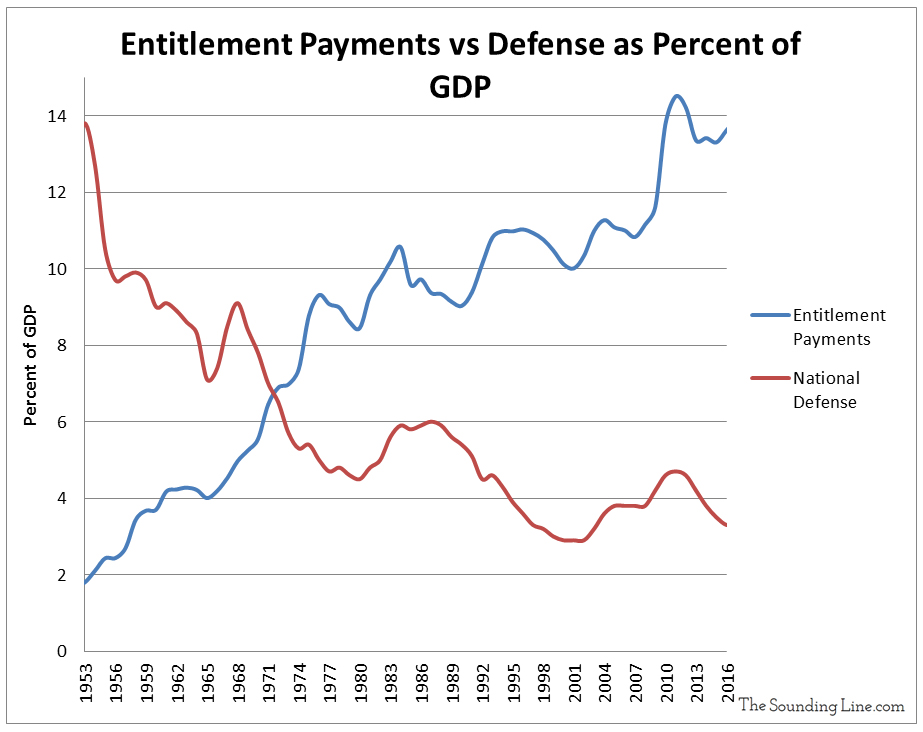Submitted by Taps Coogan on the 20th of September 2018 to The Sounding Line.
Enjoy The Sounding Line? Click here to subscribe for free.
The following graphic, from Will Geary, shows the composition of US federal government spending every year since 1962. Federal spending is broken out into discretionary (military and departments) and mandatory spending (entitlements such as Medicare and Social Security). Discretionary spending is set every year by Congress for the various departments and programs of the federal government whereas mandatory spending on programs such as Social Security are predetermined based on the nature of various entitlement programs and the number of people qualifying for them at any time.
U.S. Federal Government Spending from Will Geary on Vimeo.
As the graphic shows, federal spending has grown from $715 billion in 1962 to over $3.6 trillion in 2018. While all forms of federal spending have grown dramatically during that time period, the largest growth has been for mandatory entitlement programs such as Social Security and Medicare which now represent roughly 70% of all federal spending. Contrary to popular misconceptions, military spending has actually shrunk relative to other forms of federal spending since the 1960s. In 1962, military spending represented 73% of discretionary spending and 54% of all federal spending. Today it represents 50% of discretionary spending and ‘just’ 15% of total spending. Military spending has similarly fallen from roughly 9% of US GDP in the early 1960s to 3.5% today. Nonetheless, the US is still the largest military spender in the world by far.

The large increases in federal spending have led to ever increasing yearly deficits, expected to top $1 trillion in fiscal year 2019 for the first time since 2012, despite years of economic growth and falling unemployment.
If you would like to be updated via email when we post a new article, please click here. It’s free and we won’t send any spam.
Would you like to be notified when we publish a new article on The Sounding Line? Click here to subscribe for free.


This is typical of a nation which is transforming from a conservative republic to a socialist democratic state. The only way to reverse the trajectory to bankruptcy is to eliminate all of the national socialist programs.
“Typical”? Can you provide another example?